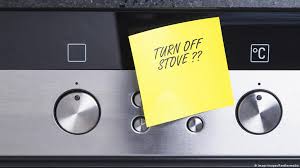
Checking and Rechecking OCD is a prevalent subtype of Obsessive-Compulsive Disorder (OCD) that significantly impacts an individual’s daily life. This condition is characterized by persistent intrusive thoughts and repetitive checking behaviors, which can be distressing and time-consuming. Understanding its symptoms, causes, and effective treatment methods is crucial for managing this condition and improving overall mental well-being.
Defining the Subject
Checking and rechecking OCD falls under the category of anxiety disorders and involves compulsions driven by obsessive thoughts. People with this condition check things multiple times, such as locks, appliances, emails, or even their own actions, believing that failure to do so will result in catastrophic consequences.
Symptoms of Checking and Rechecking OCD
Psychological Symptoms:
• Persistent intrusive thoughts related to danger or mistakes.
• Excessive doubt and uncertainty about whether an action was correctly completed.
• Heightened distress and anxiety until the checking behavior is performed.
• A strong sense of responsibility to prevent harm.
• Fear of being held accountable for perceived mistakes.
Physiological Symptoms:
• Increased heart rate and muscle tension during obsessive thoughts.
• Fatigue due to the time-consuming nature of compulsions.
• Sleep disturbances caused by the need to check things at odd hours.
• Physical restlessness and agitation.
Types of Checking and Rechecking OCD
• Safety Checking: Repeatedly verifying doors, windows, appliances, or gas stoves to prevent accidents.
• Memory Checking: Reviewing past actions, conversations, or work multiple times to ensure accuracy and avoid errors.
• Health Checking: Constantly checking one’s body for symptoms of illness or injury.
• Reassurance Seeking: Asking others for confirmation that nothing bad has happened.
• Technology Checking: Repeatedly verifying emails, messages, or social media posts to ensure correctness and avoid unintended mistakes.
• Ritualistic Checking: Performing a series of repetitive actions in a set order to feel “safe.”
• Academic or Work Checking: Reviewing assignments, reports, or emails excessively to ensure perfection and prevent criticism.
Causes of Checking and Rechecking OCD
Various factors can come together over time and lead to the onset of this condition:
• Genetics: Having a family history of OCD or anxiety disorders can raise the likelihood of developing the condition.
• Cognitive Factors: A tendency to overestimate threats and a strong need for certainty can lead to checking compulsions.
• Environmental Triggers: Stress, trauma, or a history of perfectionism can contribute to the development of compulsive checking behaviors.
• Childhood Experiences: Excessive criticism or a strict upbringing may instill a fear of making mistakes, leading to obsessive checking behaviors.
Impact on Daily Life
Individuals with checking and rechecking OCD often experience significant distress in various aspects of their lives:
• Personal Life: Relationships can be affected due to constant reassurance-seeking behavior.
• Work or School Performance: Excessive checking can lead to missed deadlines and decreased productivity.
• Social Life: Individuals may isolate themselves to avoid judgment regarding their compulsive behaviors.
• Mental Health: Increased levels of anxiety, depression, and frustration due to the persistent nature of compulsions.
Case Study: Mikes’s Experience with Checking and Rechecking OCD
Case Study: Checking and Rechecking OCD
Background: The client, a male patient, presents with severe obsessive-compulsive disorder (OCD) primarily characterized by compulsive checking and rechecking behaviors. His condition has significantly impacted his daily life, causing distress and impairing his ability to function normally.
| S.no | Areas of concern when the client came | Outcome after 5 months |
| 1. | Repeatedly checking social media and messages to confirm no naked pictures were accidentally posted, despite finding no evidence. (15 times a day, 180 minutes)
|
No more checking on social media. |
| 2.
|
Did I upload any video on a porn site? Checking repeatedly despite no evidence. (3 times a day, 60 minutes) | No more checking. |
| 3. | Repeatedly check whether I posted anything sexual in a video or if I masturbated due to sensations from quick transitions. (15 times a day, 150 minutes) | No more checking. |
| 4. | I repeatedly check my messages, feeling a sensation in my private part, which makes me doubt whether I sent a naked picture or video. ( 20 times a day, 150 minutes) | (20 times a day, 150 minutes) — End the cycle of checking. |
| 5. | I keep worrying when people take photos of me, especially in groups, and repeatedly check if any pictures were taken, linking it to a sensation in my private part. (5 times a day, 60 minutes) | No more sensation and checking. |
| 6. | Even when I know the answer, my mind keeps checking if I understood or heard it correctly. I repeat visual and auditory checks but still feel unsure, fearing I missed something or got it wrong. (10 times a day, 90 minutes) | No such doubt now. |
| 7. | I compulsively scroll through messages, even when I know there’s nothing new, to reassure myself, which triggers discomfort and physical sensations. (15 times a day, 60 minutes) | No such physical sensation and checking. |
| 8. | I constantly check the story tab on Instagram or Facebook to confirm the blue plus icon is there, reassuring myself that I didn’t accidentally post anything, especially after watching porn or masturbating. (10 times a day, 60 minutes) | Not checking for any icon now. |
| 9. | I used to post on social media without excessive checking, but now I feel more restricted and compelled to verify repeatedly. | Now the client is able to post easily. |
| 10. | We went to a club, and my friend recorded me dancing. I kept checking the video, worrying if my hand movements looked inappropriate, as I associate them with my private parts. ( 5 times a day, 120 minutes) | No such checking now. |
| 11. | I saw an old friend’s Instagram story from the same club I was at. I skipped it when my father entered, but later felt the urge to check if I appeared or did something inappropriate. After checking, I found nothing. (5 times a day, 90 minutes) | No such checking now. |
| 12. | Then another doubt arose. While searching for her account, I saw a white pin icon on her post, which triggered a fear that I might have sent something inappropriate, leading me to check again. (5 times a day, 90 minutes) | No such checking now. |
| 13. | While watching porn, I sometimes get redirected to a shopping site. I then worry my shopping app might have recorded or sent something, making me check for reassurance. (2.5 times a day, 60 minuets) | No such checking now. |
| 14. | When I first moved in, I kept checking my bathroom and room for hidden cameras. I also felt insecure when the maintenance man came, worrying he might have placed one. | No such worry and checking now. |
| 15. | While driving, I adjusted my grip on the steering wheel because its position reminded me of something sexual. Changing my grip triggered physical sensations, making me repeat the behavior. | No such sensation while driving. |
| 16. | I often relate things to myself. For example, if a friend shares a memory on Facebook, I feel the need to check if it involves me in an inappropriate way. Similarly, when people take screenshots of chats or comments, I worry if I was involved. | No such worry now. |
Impact on Daily Life:
- These compulsions consume a significant portion of his day, affecting his ability to complete tasks efficiently.
- The distress caused by constant doubt and the need for reassurance has led to heightened anxiety and social withdrawal.
Conclusion: The client’s OCD manifests predominantly through checking and rechecking behaviors, significantly disrupting his daily routine and mental well-being. His compulsions, particularly regarding security, hygiene, and bodily fluids, highlight the severe nature of his obsessive fears and the persistent need for confirmation. Effective therapeutic interventions, such as Cognitive Behavioral Therapy (CBT) and Exposure and Response Prevention (ERP), are recommended to help reduce these compulsive behaviors and alleviate associated distress.
How to Overcome Checking and Rechecking OCD
Although OCD is a chronic condition, various effective treatments and strategies can help manage and reduce symptoms:
- Cognitive-Behavioral Therapy (CBT):
• Exposure and Response Prevention (ERP): A specialized form of CBT that involves gradually exposing individuals to feared situations while preventing compulsive checking behaviors.
• Cognitive Restructuring: Helps individuals challenge irrational thoughts and replace them with rational, balanced thinking.
• Behavioral Experiments: Testing beliefs by intentionally avoiding checking behaviors to observe actual outcomes. - Mindfulness and Relaxation Techniques:
• Practicing meditation, deep breathing, and progressive muscle relaxation can help manage anxiety and reduce compulsive urges.
• Engaging in mindfulness exercises to stay present and reduce obsessive thoughts.
• Using visualization techniques to picture a scenario where checking behaviors are reduced without consequences. - Limiting Reassurance-Seeking Behavior:
• Reducing the frequency of asking others for confirmation.
• Using logical reasoning to challenge the need for excessive checking.
• Keeping a journal to track checking urges and progress in overcoming them. - Establishing Healthy Routines:
• Setting limits on the number of times one is allowed to check something.
• Engaging in structured activities to divert attention from compulsive behaviors.
• Establishing accountability by asking a trusted individual to help monitor checking behaviors. - Lifestyle Modifications:
• Maintaining a balanced diet to support brain health and reduce anxiety levels.
• Regular physical activity, such as yoga or aerobic exercise, to improve mental resilience.
• Ensuring proper sleep hygiene to reduce stress and cognitive distortions. - Seeking Professional Help:
• Consulting a licensed psychologist for proper diagnosis and treatment planning.
• Engaging in self-help books and resources based on scientific research.
Conclusion
Checking and rechecking OCD can be a debilitating condition, but with proper understanding, therapy, and coping strategies, individuals can regain control over their lives. By addressing the root causes, adopting structured interventions, and seeking professional guidance, those struggling with OCD can significantly reduce their symptoms and improve their overall mental well-being. Early intervention and consistent efforts in therapy can help individuals break free from the cycle of compulsive checking and lead a more fulfilling life. If you or a loved one is experiencing symptoms of OCD, reaching out to a mental health professional is the first step towards recovery.
You can write to us: info@emotionoflife.in or reach out us via call 9368503416 or visit our website- www.emotionoflife.in
